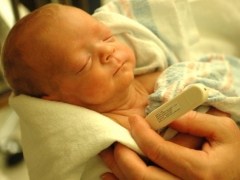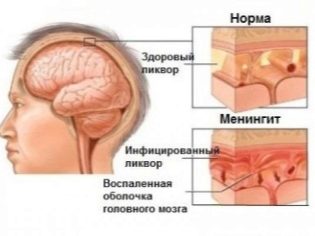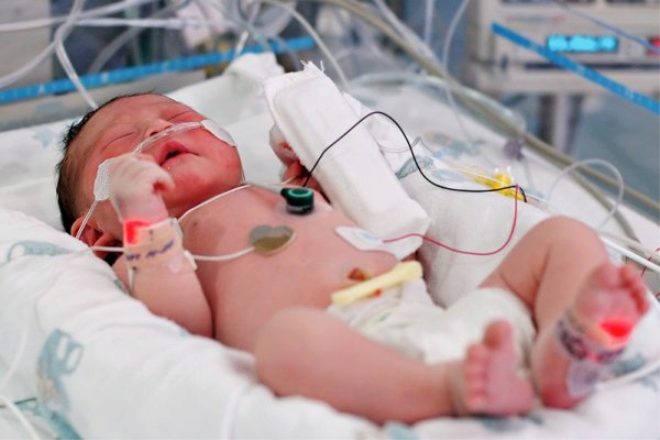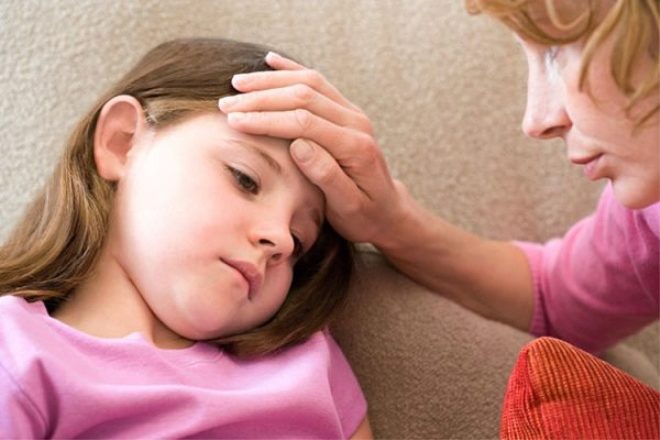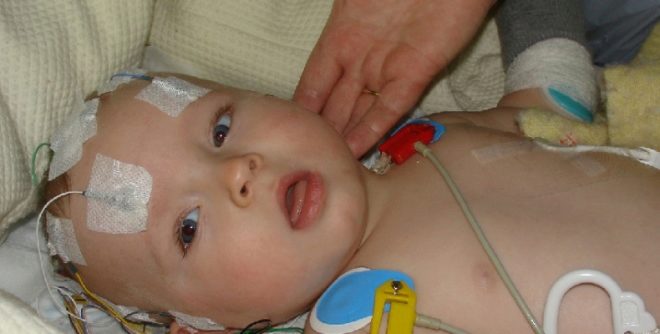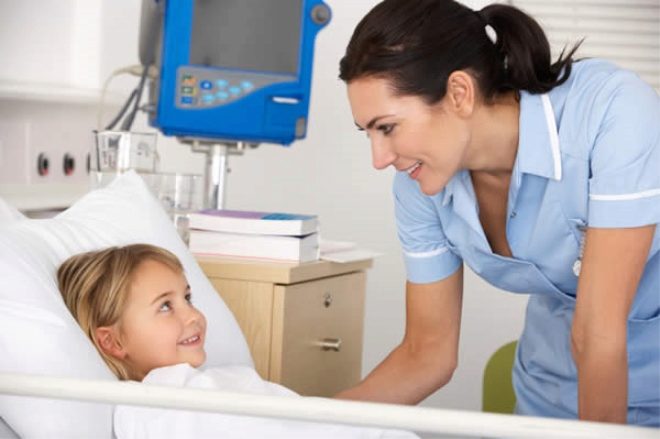Purulent meningitis in children
Purulent meningitis is a disease that is very dangerous for any child. With late diagnosis and deferred treatment, mortality increases many times.
Especially unfavorable and dangerous course of the disease occurs in newborns and children in the first months of life.
The most common causes
Inflammation of the soft membranes of the brain and spinal cord is called meningitis. Once in the children's body, pathogenic bacteria quickly provoke inflammation and the appearance of symptoms unfavorable to life.
If treatment is delayed, it can even lead to a child’s disability or death.
The most common purulent forms of the disease are:
- Meningococcal. Called by various types of meningococci. They can cause inflammation in about 60% of cases. In their structure, bacteria have a protective capsule that reliably protects them from the destructive action of immune cells. Protective cells of the immune system simply can not destroy the dense membrane of microbes. This contributes to the rapid and smooth reproduction of microorganisms.
- Pneumococcal form. Sources of infection - pneumococci. This form is less common than meningococcal. However, it also manifests a purulent process. Infection with pneumococcal infection occurs in every tenth child with meningitis.
- Hemophilic form. Occurs when infected with hemophilic bacillus type B. It is often recorded in toddlers of young children in about 25% of cases. Bacterial agent has a pronounced toxic effect on the child's body. The rapid spread through the blood vessels contributes to the rapid development of the process and the onset of inflammation.
Most often, all pathogens are spread through the blood. Some subtypes of bacteria can spread quite quickly through the lymphatic system, as well as through the perineural space.
In some cases, the contact method of infection may occur. In this case, the focus of primary inflammation is in the immediate vicinity of the spinal cord or brain.
The pathogen usually enters the child’s body from the patient or carrier of the infection. In the case of purulent meningitis, it becomes a sick person. It can be both an adult and a child. It is worth noting that the carrier is often simply marked. In such cases, the person does not even know that he is a carrier of a dangerous infection. Due to a good immune response, he does not have any clinical symptoms of the disease. Such carrier remains infectious for a long time.
Often, outbreaks of the disease are characteristic of crowded groups. The causative agents of meningitis remain viable in the environment for quite a long time. Even disinfection and treatment do not guarantee absolute sanitation.
Children can become infected with airborne droplets. Pathogenic bacteria get from the patient or carrier to the healthy mucous membranes of the child, causing an inflammatory process. The development of meningitis often occurs rapidly. In more rare cases, you can also become infected when using common cutlery or tableware. Together with the remnants of saliva, the microbe enters the mucous membranes of the oral cavity.
Usually the human body is sufficiently resistant to bacterial agents that cause meningitis.However, with a decrease in local immunity and individual characteristics, infection and the development of the disease may occur.
Main symptoms
The main clinical manifestations of purulent primary meningitis are very unfavorable. They greatly affect the well-being of the baby.
Late delivery of medical care can significantly worsen the prognosis for life and recovery.
All aspects of the disease such as purulent meningitis will be reviewed and explained to us by Dr. Komarovsky in the next video.
To the most common symptoms include:
- A swift and keen start. The disease develops at lightning speed. During the first day the body temperature rises to 38-39 degrees. In more severe cases, an increase to 39.5-40 is characteristic. This symptom is quite specific and persistent. Even despite the use of paracetamol or other antipyretics, the child's body temperature remains very high and does not decrease well.
- Severe headache without a clear epicenter. For any bends in the head or a change in the position of the body, the pain is greatly increased. There is also a spread of pain along the back of the neck. When exposed to strong and intense sounds or light, the pain intensifies.
- Severe nausea without regard to meals. Against the background of severe headache, vomiting can even occur. It is also an important specific symptom of the disease. Vomiting occurs, usually spontaneously. Even the use of drugs does not always lead to the elimination of severe nausea.
- Soreness in eyes, aggravated by bright light. When trying to look at objects away from the center, the painful syndrome increases. The kid does not tolerate the ingress of bright light on the eyes.
- Rash on the body. The most characteristic symptom for meningococcal infection. Most often found on the sides of the body, lower abdomen, as well as in the oral cavity. The spread of the rash reaches the legs and feet, as well as the hips and buttocks. Elements can be of different diameter, merge with each other. The appearance of a rash is a very unfavorable sign of the disease.
- Convulsions and meningeal symptoms. Most often, when the legs are attracted to the body, tension on the back of the neck increases and headache builds up. This is a positive meningeal sign and indicates the presence of meningitis.
- Manifestations of intoxication syndrome. The state of health of the child is greatly disturbed. Younger kids are more asking for their hands. Children become apathetic, lethargic, refuse to eat and feed. Against the background of high temperature and fever, babies feel pronounced drowsiness.
- In severe forms of the disease can occur trembling hands and feet, as well as pronounced convulsions. This is extremely unfavorable signs of the disease. In these situations, urgent qualified medical assistance is required in the intensive care unit.
Consequences and complications of purulent meningitis
Inflammation of the membranes of the spinal cord and brain is one of the most dangerous conditions for a child’s body. Even with the provision of medical care for weakened babies, numerous complications can occur. Some of them can even be fatal.
In severe forms of the disease, swelling of the brain may occur. This condition is very dangerous. During this process, clinical death may occur. Only timely holding drippers with electrolyte solutions will help prevent this terrible complication.
Also, babies with purulent meningitis may develop the following adverse effects of the disease:
- Spread throughout the body and the development of sepsis.
- With the depletion of the body's reserve, the development of multiple organ failure. The kidneys and heart are most often damaged.
- The spread of microorganisms to the inner lining of the heart and the development of endocarditis.In this case, the conduction of internal heart impulses is disturbed. Different types of arrhythmias can occur.
- The flow of purulent masses under the cranial vault and the development of empyema.
- Prolonged presence of seizure activity can lead to the appearance of episindrom.
- In the most severe case of the disease, coma appears.
Treatment
Disease therapy should be done as early as possible! Treatment of purulent meningitis requires the mandatory hospitalization of the child in the hospital.
In critical condition, the baby is hospitalized in the intensive care unit and intensive care. There he is given the necessary intravenous injections and infusions of various medications.
If a bacterium becomes the causative agent of the disease, antibacterial therapy is mandatory. Serious doses of antibiotics are prescribed. This is a vital condition for the successful cure of the disease.
Before prescribing an antibacterial drug, doctors determine the causative agent. Currently, there are many different rapid tests to identify the cause of purulent disease.
Treatment should be carried out strictly in the hospital. Meningitis can be a very dangerous disease and even cause death. Prompt treatment will help prevent complications of the disease and promotes recovery.
You can learn about the main symptoms of purulent meningitis and the features of the course of the disease in the following video program “Live healthy”.
